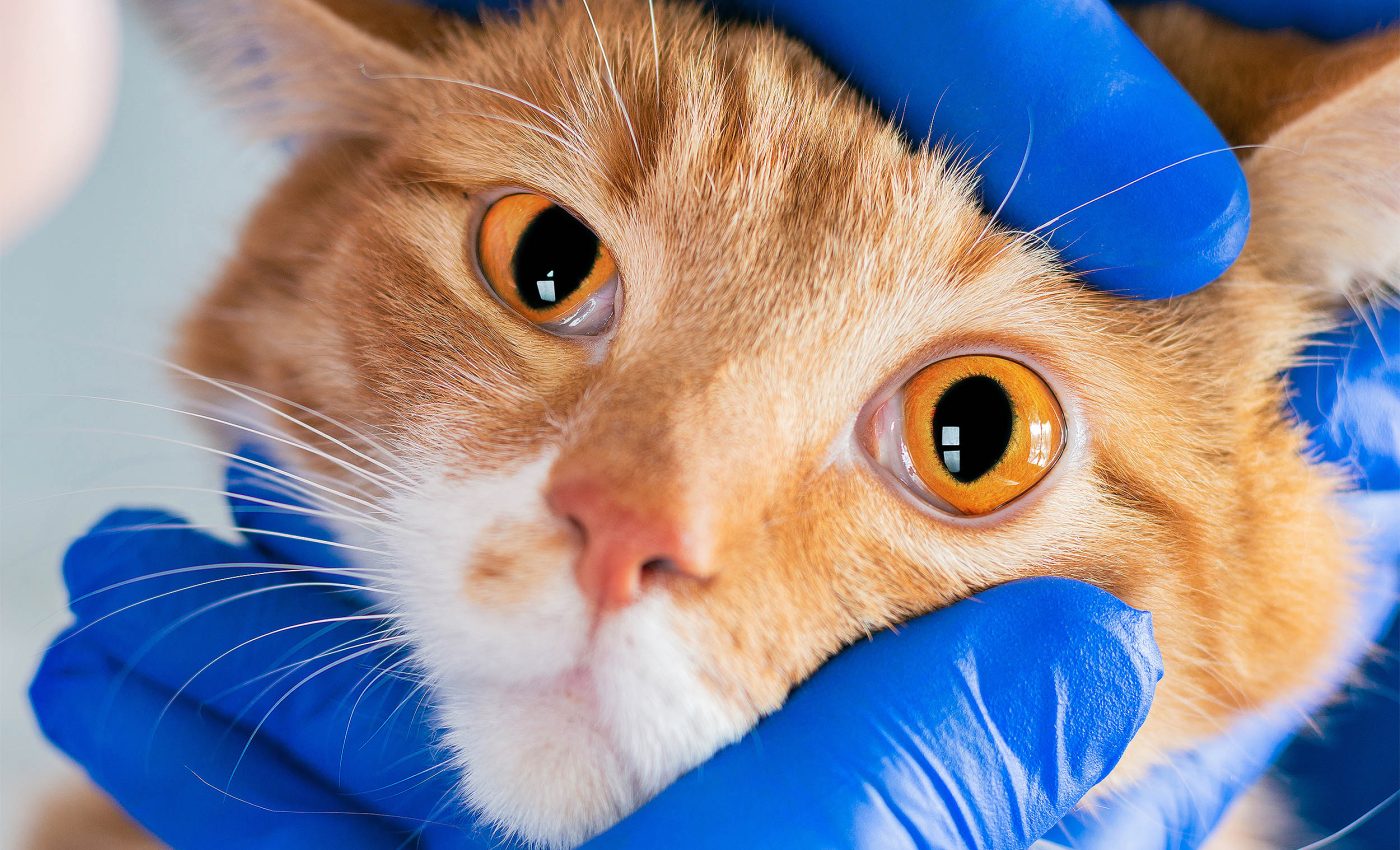
Common drug store creme offers new hope to pets with eye issues
Cats with stubborn eye infections may soon get easier care. In a new study, a 1 percent penciclovir cream kept antiviral levels in tears for over eight hours after it was put on the eye, suggesting that twice a day could be enough for many cats.
The work, run in Jerusalem with partners in California, looked at a small group of healthy house cats and a survey of owners whose cats had been treated in clinics. It focused on infections linked to a common herpesvirus that flares up again and again.
Why cats get eye infections
Dr. Oren Pe’er at the Ophthalmology Department of the Koret School of Veterinary Medicine and Hebrew University of Jerusalem, leads the team behind the penciclovir work. Feline eye disease often traces back to a herpesvirus, and it can be hard to clear for good.
Feline herpesvirus type 1, a cat herpesvirus that inflames eyes and airways, hides in nerve cells after the first illness. Stress or other triggers can reactivate it later, bringing red, watery eyes and pain.
Relapses mean owners face repeated treatment cycles, which is tough in busy homes. Cats also often resent bitter pills and frequent eye drops, so compliance slips.
What cats eye cream showed
The researchers measured comfort and tear chemistry after placing 1 percent penciclovir cream on cat eyes.
Owner reports matched the clinic checks, with 85 percent noting no side effects and 80 percent calling results effective or highly effective.
Tear levels of penciclovir stayed above the minimal inhibitory concentration, the drug level that slows or stops a virus, for more than eight hours on average.
The terminal half life was about 8.75 hours, which supports a twice daily plan in many cases.
The team also ran month long tolerance checks, with repeated eye exams and no signs of damage. This was paired with pharmacokinetics, the study of how drugs move and linger in body fluids, to guide timing.
How cats used eye cream
Veterinarians sometimes use off-label when animal specific products do not exist. In cats, converting the oral drug famciclovir into penciclovir can be inefficient because a key enzyme works differently across species.
That is why some cats need a high dose of famciclovir by mouth, which is hard for many households. A topical cream can put the active drug right on the eye, with less concern about how the liver handles it.
Creams and gels can cling to the tear film longer than thin drops. That extra contact time helps maintain useful drug levels between applications.
How it compares
Other antiviral choices exist for cat eyes. In a controlled trial ganciclovir gel three times a day matched the benefits of twice daily oral famciclovir in experimentally infected cats.
Another option is cidofovir eye solution twice a day, which reduced clinical signs and viral shedding in a lab model. Availability can vary by country, and tolerance differs by patient.
A penciclovir cream offers another path when ganciclovir gel is not sold locally. It may also suit cats that cannot handle frequent dosing or large tablets.
Safety and comfort
“Our findings suggest that a simple over-the-counter cream could offer an easier, effective option for cat owners struggling to manage recurrent eye infections. This means twice-daily application could be enough to keep the virus in check,” said Dr. Pe’er.
If future trials confirm these results, schedules could shrink to morning and evening. Shorter routines often raise adherence and reduce stress for cats and their owners.
The study recorded no adverse reactions during 31 days of testing in healthy cats. A small rise in corneal sensitivity appeared on exam, without pain or redness on inspection.
Owners in the survey rarely reported problems, and any irritation was brief. Call early. Stay calm and observant.
Limits and future plans
The new data come from seven healthy cats and owner surveys, not a large randomized clinical trial. Real world patients have irritated eyes and heavy tearing, which can change how long a drug remains in place.
The cream itself is a human dermatology product. Veterinarians would be using it off label, and cats with severe disease or ulcers still need direct care from a specialist.
Larger trials in sick cats should compare penciclovir with current care and track comfort, healing time, and adherence.
How it works
Nucleoside analog, a drug that mimics DNA building blocks, is the class that includes penciclovir. When the virus tries to copy itself, the drug slips into the new DNA and stalls the copying machinery, which slows replication in infected tissues.
Herpesviruses bring an enzyme that activates penciclovir where the virus is active. That viral enzyme step gives a useful bias toward diseased cells, a feature that helps limit exposure in the rest of the body.
Eye ointments also act as a reservoir along the lids and conjunctiva. That small depot can keep trickling active drug into the tear film between applications, which is a practical advantage when dosing has to fit around school and work.
Role in overall care
This approach does not replace vaccination, which lowers the risk of severe illness.
Sensible hygiene, calm routines, and separate bowls also reduce flare ups in multi cat households, which helps limit stress triggers that wake up latent viruses.
Topical antivirals treat signs in the eye, not the root tendency of herpes to linger. Regular checkups let veterinarians adjust plans if ulcers, bacterial co infections, or dry eye appear during a flare.
The study is published in Research in Veterinary Science.
—–
Like what you read? Subscribe to our newsletter for engaging articles, exclusive content, and the latest updates.
Check us out on EarthSnap, a free app brought to you by Eric Ralls and Earth.com.
—–













